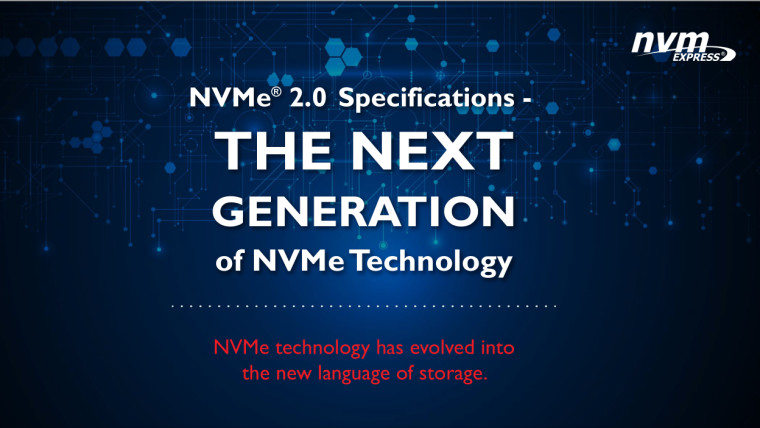The NVM Express (NVMe) consortium has launched today the latest NVMe specification version 2.0. The new 2.0 spec is backwards compatible with previous specifications. By 2024, the NVMe body expects PCIe SSDs to grow at a 43% compound annual rate and a move to a new standard to tackle that demand and to enable next-gen features is important says the organization.

As one would expect from a new standard, the NVMe 2.0 spec brings with it plenty of new technologies and perhaps the most interesting one among these is the support for rotational storage media on NVMe. This essentially means that now hard disk drives (HDDs) can also run on the NVMe interface.
Other key new features are:
- Zoned Namespaces (ZNS): A new technology that will help to place the data in certain zones within the storage device depending on how frequently they are used so rewriting and rearranging of the data stored can be reduced. This should lead to overall drive performance and life improvement. Below is an image showing the data placement difference between a conventional SSD and a ZNS SSD:
- Endurance Group Management: A new management mechanism of the storage that can allow flexible and dynamic SSD configurations which will enable dynamic capacity management and mixed-mode NAND operations. This according to the NVMe consortium should improve the "granularity of access to the SSD" and the overall control we have on the storage.
- Key Value (KV): The KV command set will allow applications to communicate with the drive controller using KV pairs instead of doing so via a block address. This is said to lower CPU computational load. This kind of SSD is known as a KV-SSD.
Back in 2019, Samsung launched the industry"s first KV-SSD prototype while it was Western Digital, last year, which began sampling the first-ever consumer ZNS SSD in the form of the Ultrastar DC ZN540. With the new spec now out, we should see more such products to follow suit soon. In fact, just yesterday, Samsung released its own SSD running on ZNS technology.
You can read more about the new NVMe 2.0 specification here.
.jpg)